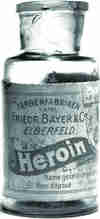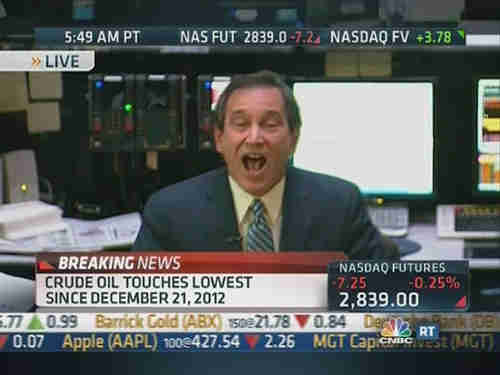
This morning’s key headlines from GenerationalDynamics.com
- Terrorist attack at finish line of Boston Marathon
- Forced selling hits gold, commodities and stocks
- Deflation and hyperinflation
- Bad economic data plagues China and United States
Terrorist attack at finish line of Boston Marathon

Second Boston Marathon explosion, seen from the finish line (CNN)
At 2:50 pm on Monday, terrorist explosions in Boston, about two milesfrom where I live, killed three people and injured dozens more.
This is the first terrorist explosion on American soil since 9/11.The American public is already extremely anxious about a number ofthings, and this attack has the potential to harden opinions. Theattacker might be an American on the left or right, or it might be aMuslim, or it might be a foreigner (Latino, Chinese, Canadian, orwhatever) or it might be a disgruntled worker of some kind. Eachpossibility will drive a different path in public opinion, and mayunite or further divide the American people. CNN
Forced selling hits gold, commodities and stocks
The price of gold as a commodity fell 9.3% to $1,362 per ounce onMonday, after falling 5% on Friday. Analysts are afraid that theprice of gold is in free fall. According to one analyst, PhoenixFutures President Kevin Grady:
“I think the last $20 has been margin selling. Themarket is falling like a knife. People are saying, ‘Get me outnow.’ You’re also seeing people selling energy profits to pay formetals losses. You’re seeing a tremendous amount of goldliquidation today.”
It was just a couple of years ago that the price of goldwas at $2,000 per ounce, and I had listen to “experts” endlesslytalk about how it was going to continue going up, up, up,to $5,000 or even $10,000 per ounce.
Actually, as I’ve been saying for years, the long-term trend price ofgold is around $400-500 per ounce, and gold has been in a bubble sincethe early 2000s. When the bubble bursts, the price of gold willovershoot the trend, and may fall to the $200-300 per ounce level.Whether that’s what’s happening now will not be known for a few daysor weeks, but it will happen at some point. And people who insist onbuying or holding gold are going to lose a lot of money.
The analyst quote above is worth study because it contains a numberof important elements. Notice the reference to margin selling,and to the fact that energy investments are being sold to makeup for losses in gold.
In a sense, the phrase “panic selling” isn’t really accurate, becauseit implies a kind of insanity. But the insanity isn’t in selling –it’s in buying. It was insanity for people to buy gold when the pricewas near $2,000. It was insanity for people to buy homes six yearsago, when home prices had tripled or quadrupled. It’s insanity forpeople to be buying stocks today, when the S&P 500 Price/Earningsratio (stock valuations) has been far above average for over 15 years.
When the bubble bursts, the selling occurs, but because of necessity,not because of insanity. So it should be called “forced selling,”rather than “panic selling.” It’s well to remember how the crash of1929 occurred.

Bayer’s pre-WW I bottle containing 5 grams of heroin
In 1929, it wasn’t because people suddenly lost their minds, snortedheroin, and decided to sell everything on a whim. Typically, peoplehad purchased stocks on margin — had arranged with their brokers tobuy stocks for only 10% of the purchase price, in essence borrowingthe other 90% of the funds from the broker, who holds the stock ascollateral. When the price of the stock begins to fall, then thebrokers start calling their clients with “margin calls,” which meansyou’ll lose your stocks unless to put up more money. In order to meetmargin calls, many investors have to sell other stocks, pushing thoseprices down. The result of this forced selling is a cascade effect,as margin calls force prices down, which results in more margin calls.
So, according to Grady, that’s what happened on Monday with gold.People had purchased gold on margin, and when the price began to fall,they were forced to sell their gold, stocks and other commodities tomeet margin calls. If this continues, then there will be a newcascade, and the crash will occur now instead of later. Or perhapsthe Fed and other central banks can find a way to intervene and stopthe fall, as it’s been doing for years.
Deflation and hyperinflation
And that segues to the massive quantitative easing that’s been goingon. The Federal Reserve has been “printing” an enormous $86 billionper month and pushing it into the banking system through quantitativeeasing. The European Central Bank (ECB) has been pouring out billionsthrough various bailout programs. But that’s nothing compared to whatthe Bank of Japan is doing. The BOJ is also “printing” $81 billionper month in quantitative easing. But since Japan’s economy is 1/3the size of the U.S. economy, that would be like the U.S. “printing”$250 billion per month, or $3 trillion per year.
With trillions of dollars in new money pouring into the bankingsystem, you’d think that we’d have hyperinflation, but we don’t. I’vebeen saying since 2003 that we’re in a deflationary spiral, and thathyperinflation is impossible. The “experts” have been predictingwrong, and I’ve been consistently right.
This morning on CNBC, market reporter Rick Santelli was talking aboutthe fall in gold prices, and he was asked about deflation. Thisreally set him off, and he started screaming at the top of his lungs:

Rick Santelli discussing deflation on Monday morning (CNBC)
“You know what? I’ll tell you what. The more I hearabout deflation, the more I just wanna pull my eyelashes out.Deflation is gonna cause central bankers to go, ohhhhh we gotta domore to fight deflation. I think it’s deleveraging of assets thathave gotten bubblicious, through cheap money, and the thingscentral banks look at that were deflation, and they come back anddo more of it just shows the LUNACY of what central banks havedone to “save our lives.” Even gold goes up when you haveinflated dollars, and it goes down when you have to pay forit.”
Well, Santelli may not like talk of deflation, but that’s what we’vegot. But he’s right that the massive outpouring of central bank moneyhas created bubbles in commodities and stocks through debt, and nowthat debt is being deleveraged through forced selling, forcing pricesdown.
What’s the motivation for all this talk about hyperinflation? Myobservation is that it’s all wishful thinking. People on the leftwant to see hyperinflation because they want to see the $17 trilliongovernment debt get inflated away. People on Wall Street want to seehyperinflation because they want to convince people to buy stocks.People on the right want to see hyperinflation because they want tosell gold. Deflation is a disaster for all of them, so they’drather just go into a state of denial.
But from the point of view of Generational Dynamics, inflation doesnot occur in generational Crisis eras (except for brand newcurrencies). The famous German Weimar hyperinflation occurred duringa generational Unraveling era. Enormous inflation occurred in Americafrom 1977 to 1980, but that was during a generational Awakening era.During the Great Depression and WW II, one country after anothersuffered deflation, not inflation. You would think that there wouldbe at least one major case of hyperinflation during that period, ifonly by accident, but apparently there was none. Hyperinflation doesnot occur during generational Crisis eras. We’re in a deflationaryspiral, and we’re going to stay there.
So we have trillions of dollars in money pouring out of the centralbanks. Where is it going, and why isn’t it causing hyperinflation?
Back in 2003, I received a call from an officer at my bank. Sheoffered to loan me $25,000 because I was such a good long-timecustomer of the bank. No collateral, low interest rate. Hermotivation, of course, is that she gets a commission.
Well, today those things don’t happen any more, at least not to me andyou, Dear Reader. Those of us in the 99% don’t see a dollar of thosetrillions of dollars. Instead, that money is loaned to the people inthe 1%, the people who don’t need it, but borrow it anyway, at nearzero interest rates, to invest in gold or commodities or stocks. Thatdoesn’t cause inflation.
Well, now it looks like that poop is hitting the fan. All thosepeople in the 1% are in debt up to their eyeballs, and suddenlythey’re getting margin calls. They’re forced to sell, which pushesdown prices. That causes deflation. Let’s see if Ben Bernanke canget us out of this one. CNBC
Bad economic data plagues China and United States
There was a lot of bad economic news on Monday, contributingto the fall in gold, commodity and stock prices:
- China’s economy grew more slowly than expected in the first quarter.
- In the U.S., the Federal Reserve’s Empire State manufacturing index, a key gauge of economic health in New York State, fell to 3.1 in April from 9.2 the previous month, falling far short of market expectations for a decline to 7.0.
- On Friday, a survey of consumer sentiment fell to a 9 month low.
- Retail sales in the U.S. fell in March, defying expectations of a rise.
Permanent web link to this article
Receive daily World View columns by e-mail

COMMENTS
Please let us know if you're having issues with commenting.